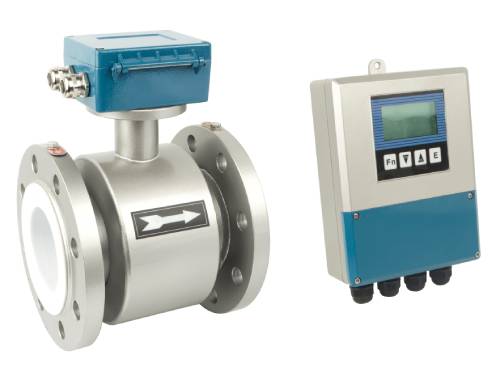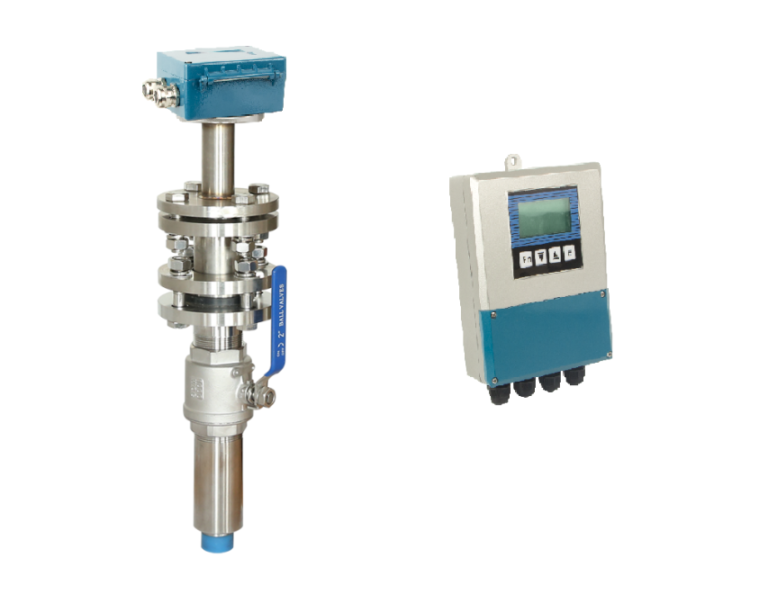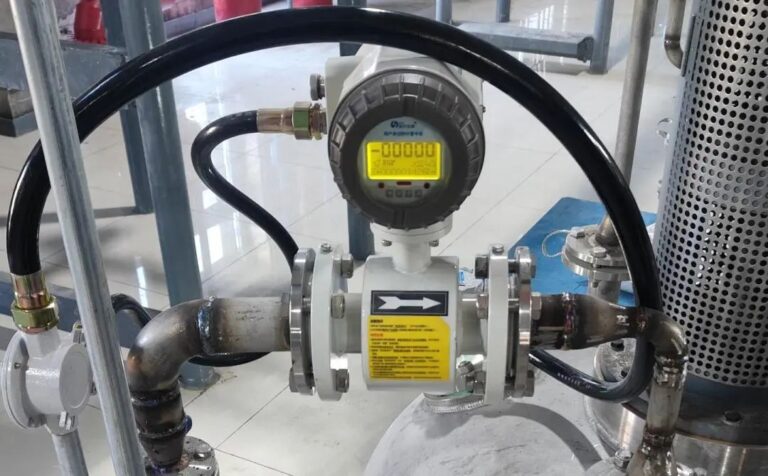Electromagnetic flowmeters are widely used in various industries for measuring the flow rate of conductive liquids. These devices operate based on Faraday’s Law of Electromagnetic Induction, which states that a voltage is induced when a conductor moves through a magnetic field. In the case of electromagnetic flowmeters, the conductive liquid acts as the conductor. To cater to diverse industrial requirements and environmental conditions, electromagnetic flowmeters are classified in several ways. This document provides a detailed overview of the different classification methods of electromagnetic flowmeters.
1. Classification by Excitation Method
a. Direct Current (DC) Excitation: DC excitation uses a constant direct current to energize the magnetic field. This type is suitable for measuring slow-moving or static conductive fluids. However, it is susceptible to electrode polarization, which can affect measurement accuracy.
b. Alternating Current (AC) Excitation: AC excitation employs alternating current, typically at power frequencies (50/60 Hz). Although this method was widely used in the past, it is more prone to electromagnetic interference and less accurate compared to modern excitation techniques.
c. Pulsed DC (Square Wave) Excitation: This method uses pulsed direct current or square waves, significantly reducing the impact of electrode polarization and improving measurement stability. It is the most commonly used excitation method in contemporary electromagnetic flowmeters due to its superior noise immunity.
d. Dual Frequency Excitation: Combining high and low-frequency signals, dual frequency excitation offers a balance between stability and dynamic response. It is especially effective in handling fluids with varying properties or in environments with significant electromagnetic interference.

2. Classification by Connection Method
a. Flanged Type: Flanged electromagnetic flowmeters are connected to pipelines using flanges, making them suitable for medium to large pipeline diameters. This robust connection ensures durability in demanding industrial environments.
b. Insertion Type: Designed for large-diameter pipelines, insertion-type flowmeters are installed by inserting the sensor into the pipe. They are cost-effective for large-scale systems and allow for easy installation and maintenance.
c. Threaded Type: Threaded flowmeters are ideal for small-diameter pipelines and compact installations. Their threaded connections provide secure and leak-proof operation in tight spaces.
d. Sanitary (Hygienic) Type: With quick-connect fittings and smooth surfaces, sanitary flowmeters are designed for industries with stringent hygiene standards, such as food, beverage, and pharmaceuticals.
3. Classification by Electrode Structure
a. Fixed Electrodes: These are permanently attached electrodes, commonly used in standard flowmeter designs. They provide reliable and consistent performance across general applications.
b. Replaceable Electrodes: Designed for aggressive or abrasive fluids, replaceable electrodes facilitate maintenance by allowing easy replacement without dismantling the entire unit.
c. Self-Cleaning Electrodes: Self-cleaning electrodes minimize fouling and contamination, making them suitable for liquids with suspended solids or scaling tendencies.

4. Classification by Converter Configuration
a. Integrated (Compact) Type: In integrated flowmeters, the sensor and signal converter are housed together. This design is space-efficient and ideal for environments with stable conditions.
b. Remote (Split) Type: The sensor and converter are separated by cables, enabling installation in challenging environments, such as high-temperature, high-vibration, or high-humidity areas.
5. Classification by Pipe Diameter
a. Small Diameter (DN3-DN25): Used for precise measurement in systems with small flow rates, such as in laboratories or dosing systems.
b. Medium Diameter (DN25-DN300): Commonly applied in general industrial processes, water treatment, and chemical industries.
c. Large Diameter (DN300 and above): Ideal for large-scale water distribution, wastewater treatment, and bulk material handling industries.
6. Classification by Liner Material
a. Rubber Lining: Suitable for water, wastewater, and slurry applications due to its flexibility and wear resistance.
b. PTFE (Polytetrafluoroethylene) Lining: Highly resistant to chemicals, PTFE linings are ideal for aggressive acids and alkalis.
c. Polyurethane Lining: Offers excellent wear resistance, making it suitable for abrasive media like slurry and mineral pulp.
d. Ceramic Lining: Provides exceptional hardness and wear resistance for extreme conditions involving abrasive or corrosive media.

7. Classification by Industry Application
a. General Industrial Flowmeters: Used in sectors like chemical processing, water treatment, and energy production for standard flow measurement tasks.
b. Sanitary Flowmeters: Tailored for industries with strict hygiene requirements, such as food processing, pharmaceuticals, and beverages.
c. Explosion-Proof Flowmeters: Designed for hazardous environments where flammable gases or dust are present, common in petrochemical and mining industries.
8. Classification by Signal Output
a. Analog Signal Output (4-20mA): A traditional and widely used method for transmitting flow data to control systems.
b. Digital Signal Output (RS485, Modbus, HART): Provides advanced communication capabilities, enabling remote monitoring and integration with industrial automation systems.
c. Pulse Output: Typically used in batching and dosing applications where flow measurement needs to be directly linked to control actions.

Conclusion
Electromagnetic flowmeters offer versatile solutions across various industries due to their ability to measure conductive liquids accurately and reliably. Understanding their classification helps industries select the most suitable type for their specific applications, ensuring optimal performance, durability, and cost-efficiency. By evaluating factors such as excitation methods, connection types, electrode configurations, and output signals, industries can tailor flow measurement solutions to meet diverse operational needs.
